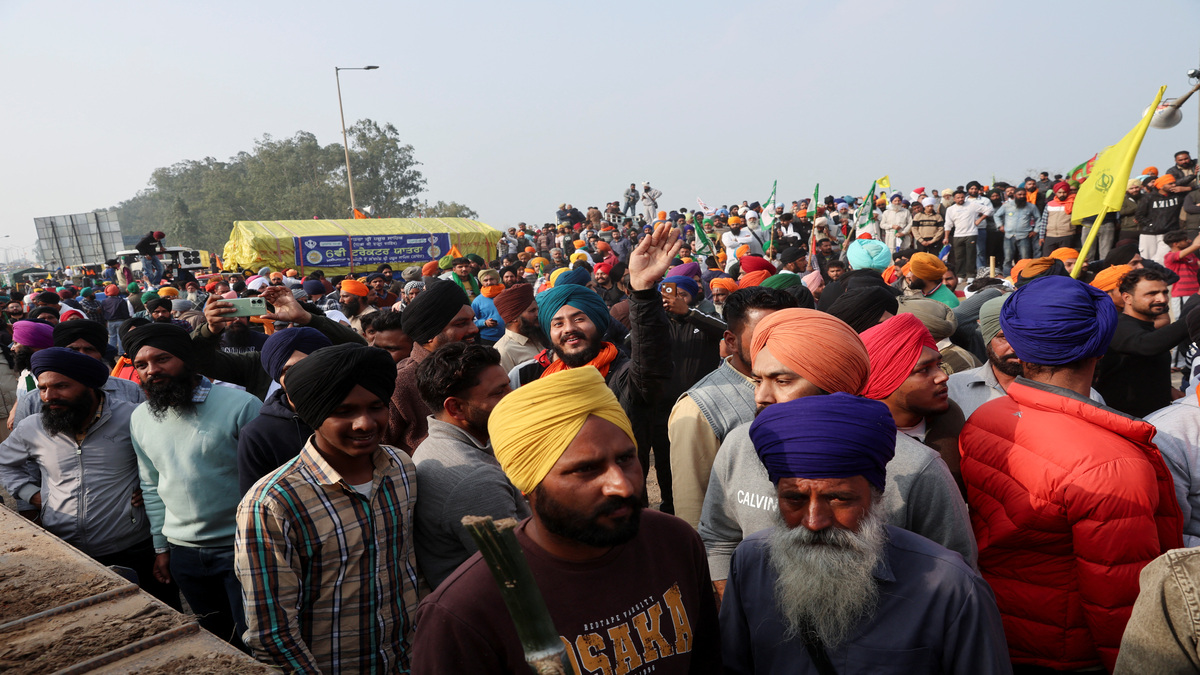A day after LK Advani, Murli Manohar Joshi, Uma Bharti and a host of other senior leaders of Sangh Parivar were charged by the CBI with criminal conspiracy for the demolition of the Babri Mosque structure in Ayodhya, Yogi Adityanath did what no other chief minister of Uttar Pradesh dared to do in the last three decades.
Adityanath took a chopper from Lucknow to land in Ayodhya on Wednesday morning and then drove straight to Hanuman Garhi to pay his obeisance to the Ramlala idol in a makeshift temple. The Uttar Pradesh chief minister then proceeded to Ram ki Pari and offered prayers at the bank of river Saryu. No other Uttar Pradesh chief minister had done that till date. While former chief ministers Kalyan Singh, Ram Prakash Gupta and Rajnath Singh, all from the BJP ranks have visited Ayodhya over a-decade-and-half ago but all three avoided visiting Ramlala. Adityanath is first chief minister to have done that.
Ramlala (childhood idol of Lord Ram) is placed in a small temporary structure covered with a tarpaulin on top. The whole area is heavily fortified and is under round the clock vigil of hundreds of paramilitary personnel. As on date a de-facto Ram temple, albeit makeshift, exists at the demolished Babri mosque site.
Before he left in the evening after an eight-hour stay, Adityanath announced a series of developmental projects worth Rs 350 crore for the temple town. In consultation with local religious leaders, he announced several spiritual-religious programmes like daily Saryu aarti on the pattern of Ganga aarti in Haridwar and Varanasi, provision for round the year Ramlila, Saryu Mahotsav and so on.
Quite aware that his Ayodhya visit would draw national attention, the chief minister in his concluding words in his speech at the Digambar Akhara to celebrate the birthday of RamJanambhoomi Nyas Mahant Nritya Gopal Das said, “I am well aware of your sentiments (construction of grand Ram temple). I know what you want to hear from me. I am of the same opinion as you are. The dispute around Ramjanambhoomi would be resolved through dialogue between both the communities. Supreme Court has also suggested a dialogue between the two communities. The Uttar Pradesh government will always be there for such an initiative. A new and positive environment for talks is building. Several Muslim organisations have come up appealing that Ayodhya should be left to Hindus. Many more organisations are expected to come up with a similar opinion. Take my word that Ramjanambhoomi issue would be resolved amicably.”
Adityanath’s visit to Ayodhya saw the return of the Ramlala hum ayenge Mandir wahin banayenge (Ramlala we will come and build the temple there) chant. The last time this “mandir wahin banayenge” chant, trademark catchphrase of Ayodhya movement of the late 1980s and early 1990s was heard, at least in full media glare, was in February 2002 when VHP and allied organisations Ramjanambhoomi Nyas had organised Shiladan in Ayodhya under the leadership of late Mahant Ram Chandra Paramhans.
Paramhans, the then head of Digambar Akhada, was instrumental in installing the Ramlala statue inside Babri mosque way back in December 1949. Adityanath’s visit to the Digambar Akhada followed by the announcement of rejuvenation and reconstruction of “Paramhans samadhi” has manifold implications.
“Here in Ayodhya I feel like a sant, one among the sants gathered here,” the chief minister said. In the temple town, he mixed his role as a chief minister and as a religious leader.
Incidentally, he is only chief minister, or first ever in India who combines two roles – head of the government and head of a religious sect. He continues to be head of Gorakhnath peeth. Significantly, Adityanath concluded his speech with Jai Sri Ram.
Adityanath’s intent on initiating an all-round development of Ayodhya was evident when on 9 May the state cabinet merged the Faizabad and Ayodhya municipalities to create a stronger body as the Ayodhya Municipal Corporation. The fact that the name Faizabad was dropped while creating the municipal corporation is taken as an indicator that henceforth development of Ayodhya will take priority over Faizabad. In the same cabinet meeting it was decided that municipalities of Mathura and Vrindavan would be merged to create Mathura-Vrindavan Municipal Corporation. Adityanath has been an ardent proponent of the Ram temple and has even held a meeting with Hindu priests in Gorakhpur for the same purpose. His mentor Mahant Avaidyanath whom he succeeded as head of Gorakhnath peeth and as Gorakhpur MP had been one of the foremost exponents of temple movement. Mahant Avaidyanath had also headed the Ram Janambhoomi Nyas, an umbrella body of priests related with the temple movement. Mahant Avaidyanath had once said the cherished task of Ram temple construction would be done by his disciple Adityanath.
It is noteworthy that while no senior central BJP leader, except for Venkaiah Naidu came out in open to speak on the CBI court framing charges against Advani in the Babri case, Adityanath waited for over 10 minutes at the VVIP guest house to receive the party’s founding father. He had a closed-door discussion with him and saw him off when the veteran leader left for the court. The party veteran has a long association with Adityanath and even had a warm relationship with Mahant Avaidyanath. It is perhaps time for Adityanath to repay.


)




)
)
)
)
)
)
)
)